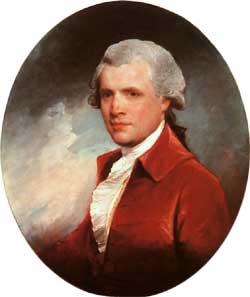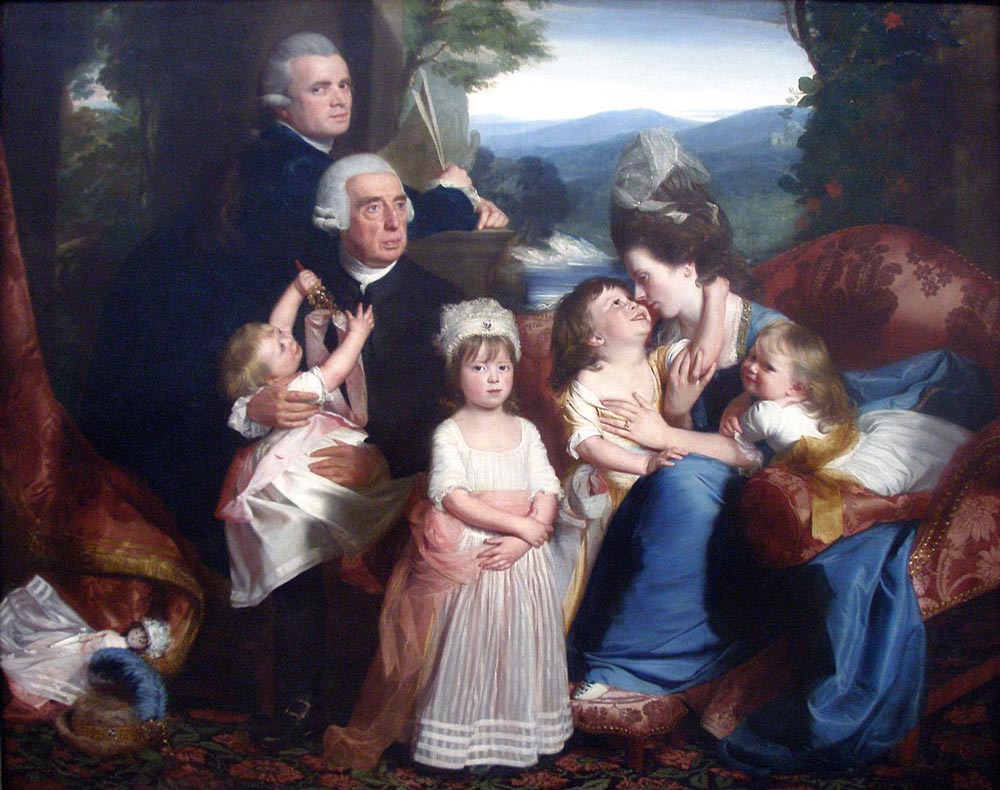| John Singleton Copley | |
|---|---|
 |
|
| Born | 1738 Boston, Province of Massachusetts Bay |
| Died | September 9, 1815 London, United Kingdom |
| Nationality | American |
| Field | Portraiture |
| Works | View Complete Works |
There can be no doubt that the American Colonial-era artist John Singleton Copley was a natural talent. If he hadn’t been born with the innate ability of an artist, it would have been extremely difficult to reach the high level of achievement he did in the art-poor environment in which he grew up.
Copley was born in the Boston area in 1738. His mother and father were Irish immigrants. Even though Boston was already a thriving city, this was still relatively early in the timeline of the development of American culture. Boston was not yet a large or cultured city — it was a “backwater colonial town.”
There were few (if any) museums or institutions where great art was displayed. That meant that Copley would have extremely minimal access to view and learn from other great works of art. By contrast, young men of his age in Europe would have had access to the greatest paintings of the greatest masters of all time. By comparison, Copley was in an “art vacuum.”
This means that Copley had to be content with those few books that were available in which engravings and reprints of art could be found. In fact, Copley frequently complained that he had no opportunity to view “real art” which he could study and learn from.
Early Life
 Copley’s was only about 10 years old when his father died. His mother supported her family with a small tobacco shop. She eventually remarried, and fortunately for Copley, his step-father, Peter Pelham, had some skill as an engraver and an artist. But he too died when John Copley was barely a teenager.
Copley’s was only about 10 years old when his father died. His mother supported her family with a small tobacco shop. She eventually remarried, and fortunately for Copley, his step-father, Peter Pelham, had some skill as an engraver and an artist. But he too died when John Copley was barely a teenager.
Thus, John Singleton Copley was mostly self-taught – and yet, he went on to become among the most in-demand portraitists of early America. Just about anyone might instantly recognize his famous portrait of the American patriot Paul Revere depicted with hand on chin and holding a silver tea pot. He also painted other early American and British luminaries, including John Adams, British General Thomas Gage and Ward Nicholas Boylston, a wealthy Boston merchant.
Although his first known works done at age 15 and showed great promise, they still clearly lacked the polish of a skilled artist – yet the portraits he began painting at this young age quickly brought considerable attention from all who viewed them. Indeed, these early works became the only advertising he needed. He began to get many requests for portrait work, which was a good way to earn money for a young artist.
Rise to Fame
 The rise in reputation and demand for Copley’s work was dramatic. By the time he was 19, he was making a better than average income painting portraits. He was also producing works of his own. An early painting that was extremely important to bolstering his career into a higher stratum is A Boy With a Squirrel. This is a painting of his half-brother Henry Pelham, who appears to be in his mid to late teens. He holds a tiny chain to which is tethered a squirrel. Pelham is sitting at a small wooden table with the squirrel perched to his right, eating a nut.
The rise in reputation and demand for Copley’s work was dramatic. By the time he was 19, he was making a better than average income painting portraits. He was also producing works of his own. An early painting that was extremely important to bolstering his career into a higher stratum is A Boy With a Squirrel. This is a painting of his half-brother Henry Pelham, who appears to be in his mid to late teens. He holds a tiny chain to which is tethered a squirrel. Pelham is sitting at a small wooden table with the squirrel perched to his right, eating a nut.
A Boy With a Squirrel was taken to London by an associate where it caused many in the European artist community to take note. This and other works resulted in an invitation for Copley to sail to England where he could study art and advance his skills while working in the richly artistic culture of the Old World. Copley was eager to do so, even though he was making a great deal of money. In fact, one historic account states that by the 1760s, when Copley was in his late 20s, he had become a member of “the local aristocracy.”
Even so, Copley felt that working in the American colonies kept him isolated. He complained frequently of having few other works to study, or other artists of his caliber to associate with. Some say that Copley was highly prone to “brooding and self-pity” as a general rule. He was also said to be detached from anything to do with local politics, issues of the day and did not like to socialize. He later became a known supporter of American independence from Great Britain, however.
Finally in Europe
Despite his eagerness to visit and work in Europe, it took until 1774 before he finally made the trip. He sailed from Boston, leaving his wife and children behind. He teamed up in London with artist Benjamin West, with whom he collaborated on creating “war paintings,” which were scenes of famous battles, deaths of generals and heroes, and so forth. While in London Copley received numerous requests for portraits, which he refused. He was now doing art for art’s sake.
From London Copley traveled on to other Europeans centers of art and culture, including France and Rome. He eventually returned to England. His later career in England had many ups and downs. As his skills and prospects declined, Copley experienced considerable financial distress. Although he maintained considerable correspondence with associates and his family back in New England, he would never return to America. He died in Croydon near London in 1815. He was so deeply in debt at the time of his death that even the sale of all of his property was not enough to pay off all of his creditors.
Legacy
John Singleton Copley today is considered to be perhaps the greatest painter of colonial American times. He left behind about 350 works. Copley mastered the accurate and realistic depiction of the people in his portraits to an unprecedented degree. One of his innovations was depicting his subjects with an artifact that helped tell the story of what that person did for a living – for example, as in showing Paul Revere with a silver tea kettle because Revere’s profession was that of silversmith.
Copley’s work is said to have had enormous and lasting impact well into the 19th Century. Many other great artists, such as Fritz Lane and William Harnett claimed Copley as a huge influence. Today a statue of John Singleton Copley stands in a square that was named after him – Copley Square. A township in Ohio also bears his name today.
That Copley achieved such heights is remarkable considering his humble beginnings – the son of a widowed tobacconist in a backwater colonial city where he could never benefit from formal art education, or even have the benefit of the works of others to show him the way.